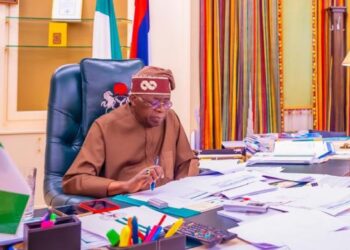The REA and NASENI have signed an MoU on Nigerian community electrification at COP28.
On Sunday, December 3, the Rural Electrification Agency and the National Agency for Science and Engineering Infrastructure (NASENI), agreed to work together to increase rural electrification in Nigeria.
They signed a Memorandum of Understanding (MoU) on rural electrification, months after they had been talking for a while about working together to increase capacity.
NASENI says this MoU will help bring clean electricity to rural areas in Nigeria that are still lacking electricity access. It also means they will give advice and knowledge to help the Rural Electrification Agency with their projects in these remote communities.
The agreement says that NASENI will help with research and give the right technology to use clean energy better. They want to make sure the electricity in these places lasts a long time and is good for the environment.
Khalil Halilu, the Chief Executive Officer of NASENI, says they’re excited to work together on the Nigeria Electrification Project (NEP) to facilitate electricity access for rural communities with no access yet.
This teamwork helps both agencies do better at what they do. They pledged to use new ideas and technology to help Nigeria grow and make life better for its people.
On the sidelines of the COP28 summit, Ahmad Salihijo, the Chief Executive Officer of the Rural Electrification Agency said they had already set up more than 100 solar hybrid mini-grid projects and given out over 1.6 million Solar Home Systems across Nigeria.
Ramping up clean energy financing
Getting funds for clean energy projects in places like sub-Saharan Africa has been tough.
The World Economic Forum says we can fix this by dealing with three main things: the type of money borrowed, the interest rates on loans, and the different risks involved.
They suggest using mixed finance setups to create a fund in local currency, attract private investors, and bring in local big-currency investors for clean energy projects, even though they might seem risky.
This local currency fund helps make loans less risky overall, cuts down on how much it costs to borrow, and keeps safe the money that’s a bit more careful with risks.
The WEF talked about InfraCredit, which uses mixed finance to ensure local currency and gets pension funds to bring in private cash for these projects.























